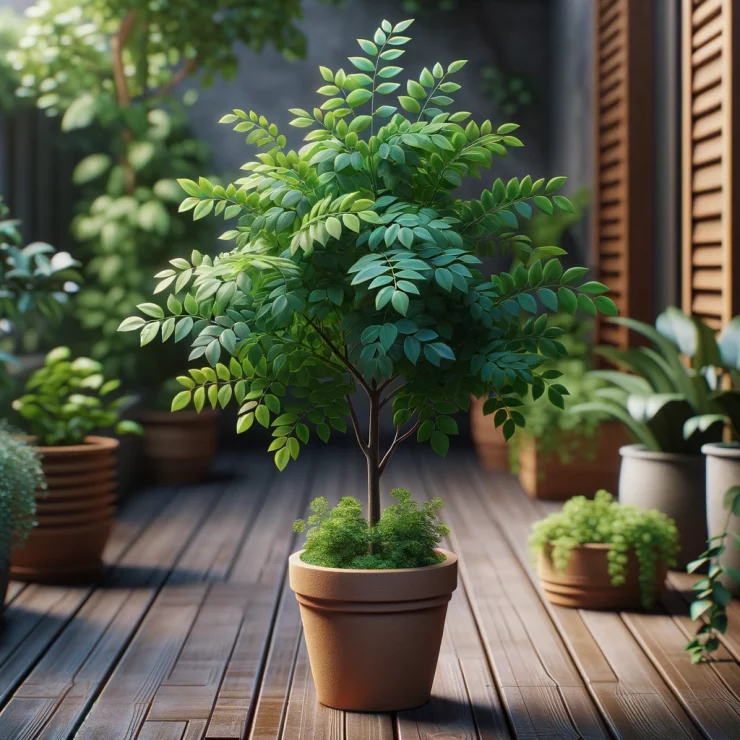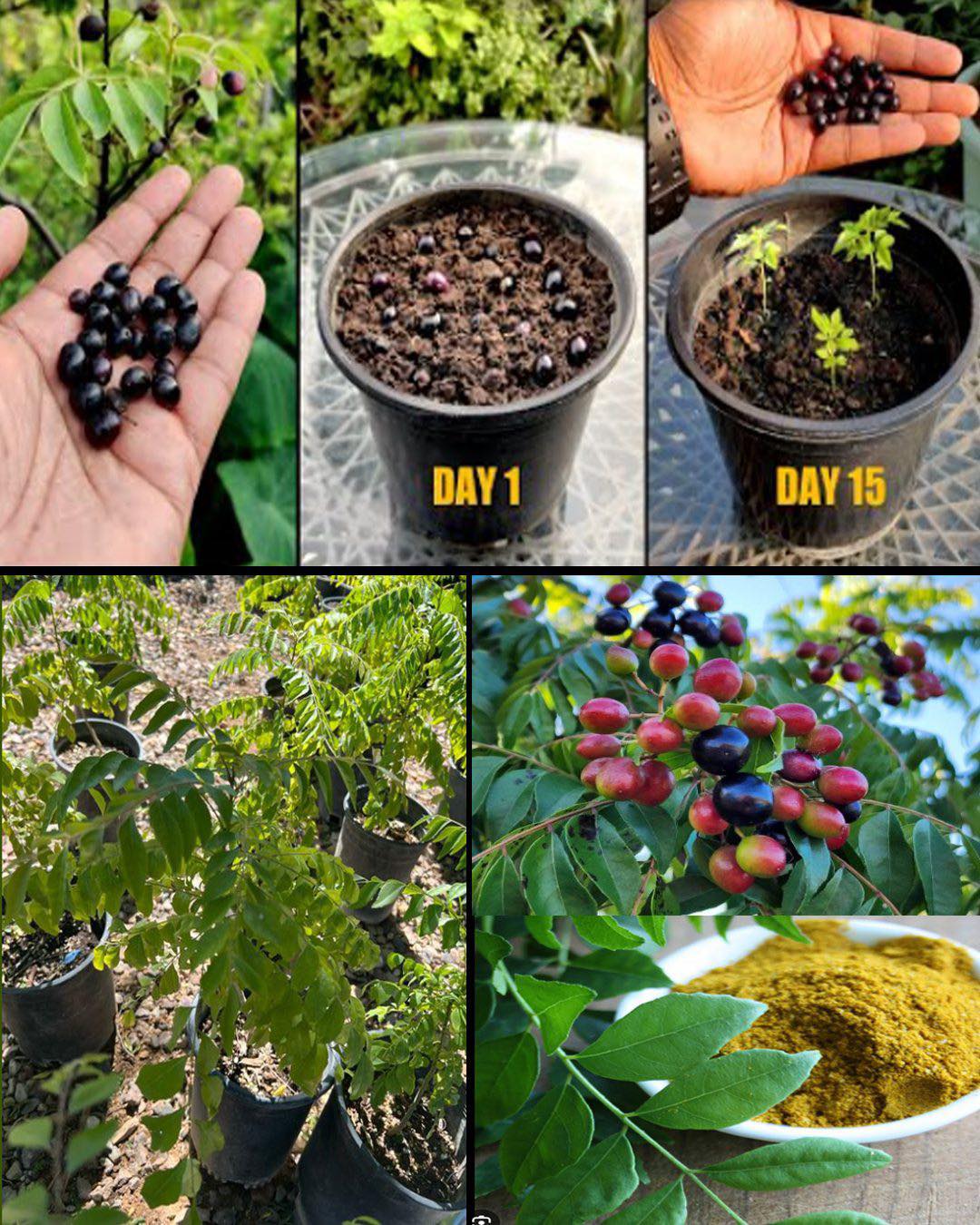The curry leaf tree, known for its aromatic leaves used in many South Asian cuisines, is a delightful addition to any home garden. Whether you have a spacious backyard or just a small balcony, you can successfully cultivate a curry leaf tree in a container. In this guide, we’ll walk you through the steps to grow a healthy and thriving curry leaf tree right in the comfort of your own home.

Choosing the Right Container:
Select a container that is large enough to accommodate the curry leaf tree’s root system and allows for proper drainage. A 12- to 16-inch diameter pot with drainage holes at the bottom is ideal. Ensure the container is made of a durable material like terracotta or plastic.
Selecting the Right Location:
Curry leaf trees thrive in warm, sunny conditions, so choose a spot that receives at least 6 to 8 hours of sunlight per day. If you live in a colder climate, consider placing the container near a south-facing wall or in a sunny window indoors during the winter months.
Preparing the Potting Mix:
Use a well-draining potting mix that retains moisture but does not become waterlogged. A mixture of equal parts potting soil, perlite, and compost works well for curry leaf trees. Fill the container with the potting mix, leaving a few inches of space at the top.
Planting the Curry Leaf Tree:
Carefully remove the curry leaf tree from its nursery container and gently loosen the roots. Place the tree in the center of the prepared container and fill in any gaps with additional potting mix. Water the tree thoroughly after planting to help settle the soil around the roots.
Watering and Maintenance:
Water the curry leaf tree regularly, keeping the soil consistently moist but not waterlogged. Allow the top inch of soil to dry out between waterings. Fertilize the tree with a balanced liquid fertilizer every 4 to 6 weeks during the growing season (spring and summer).

Pruning and Harvesting:
Prune the curry leaf tree regularly to encourage bushy growth and remove any dead or diseased branches. You can harvest the aromatic leaves as needed for cooking once the tree is established. Simply snip off the desired amount of leaves using sharp scissors or pruning shears.
Protecting from Frost:
If you live in a region with cold winters, bring the curry leaf tree indoors or provide protection from frost during the colder months. Place a layer of mulch around the base of the tree to help insulate the roots and keep them warm.
Growing a curry leaf tree in a container at home is a rewarding experience that allows you to enjoy the fresh, aromatic leaves for culinary use year-round. By following the steps outlined in this guide and providing the proper care and maintenance, you can successfully cultivate a thriving curry leaf tree right on your doorstep. Happy gardening and cooking!
News
JJ Redick reacts to Luka Doncic trade for Anthony Davis
In one of the most jaw-dropping moves of the season, the NBA landscape was rocked by the blockbuster trade involving Luka Dončić and Anthony Davis—a swap that has sent ripples of excitement, disbelief, and heated discussion through the league. Among…
Anthony Davis FULL reaction to trade to Mavericks for Luka Doncic
In a blockbuster move that sent shockwaves through the NBA and left fans reeling, Anthony Davis has been traded to the Dallas Mavericks in exchange for Luka Dončić. In the immediate aftermath of the news, Davis took to the media…
Shaq reacts to Dallas Mavericks wanting Kevin Durant after Luka-AD trade 👀
In the constantly shifting world of the NBA, trade rumors and blockbuster moves are a regular part of the season’s drama. The latest twist has fans buzzing: the Dallas Mavericks have reportedly set their sights on acquiring Kevin Durant in…
Donovan Mitchell FILTHY poster dunk on Kristaps Porzingis 😳
In a game filled with high-intensity moments and jaw-dropping highlights, one play in particular has left fans and analysts buzzing about Donovan Mitchell’s latest display of athleticism. Early in the contest, with the atmosphere already charged by an evenly matched…
Joel Embiid hits go-ahead bucket vs Mavs then chats with Anthony Davis after game
In one of the most thrilling contests of the season, Joel Embiid delivered a clutch performance against the Dallas Mavericks, punctuating the game with a go-ahead bucket that sent the home crowd into a frenzy. The atmosphere in the arena…
D’Angelo Russell game winner as Nets hit two 3’s in 3 seconds to win vs Rockets 😱
In one of the most electrifying moments in recent NBA history, D’Angelo Russell delivered an unforgettable game-winner that left fans and commentators in complete awe. With the Brooklyn Nets locked in a tense battle against the Houston Rockets, the outcome…
End of content
No more pages to load











